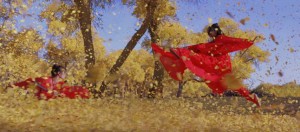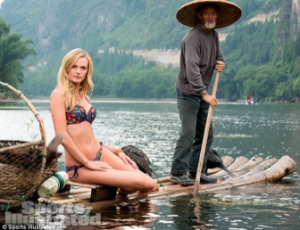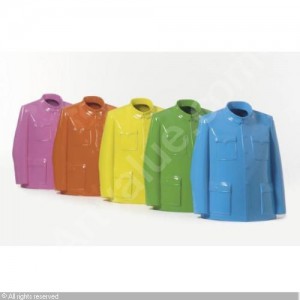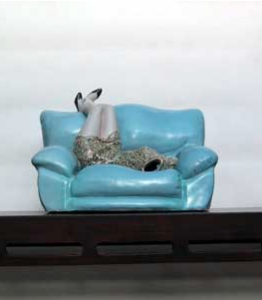Courtney Gallagher
Hero: Red Leaves Scene
Fashion & Gender in China: Professor Tsui
In this film sequence, the conflicting colors of the setting, gold and red, mirror the conflict between Flying Snow and Moon over Broken Sword’s love. When the conflict between Flying Snow and Moon is resolved by the death of Moon, so does the conflict in the colors of the setting, as the setting changes to only red. The colors of the setting in this film excerpt, therefore, work to highlight the tension and subsequent resolution in the narrative.

Conflict in Setting Color (Gold/Red), Conflict Between Flying Snow & Moon
The color contrasts that consume the beginning of this film sequence reveal the conflict between Flying Snow and Moon. Flying Snow and Moon’s red dress creates a contrast between the gold leaves in the setting around them. The gold of the setting brings to light, and highlights the betrayal, jealousy, and anger felt by both of these women [shown by their red dresses], as they compete for Broken Sword’s love. Although there seems to be a visual similarity between these two women, as both wear red dresses, their dresses present very different meanings. Flying Snow’s dress is a rich, brilliant red, flowing smoothly in the wind. On the other hand, Moon’s dress is flimsy, faded red. The contrast between their red dresses is representative of Flying Snow’s high social status and Moon’s lower status of servitude. It also shows the contrast between their anger. While Flying Snow’s anger arises from a sense of betrayal, Moon’s arises from a feeling of jealousy. The contrasting nature of the two women is further presented when Flying Snow and Moon are fighting one another [using kung-fu]. Snow fights Moon with ease and grace, while Moon struggles clumsily. During the fight, the golden leaves are blowing in the wind, seemingly attacking Moon for most of the sequence, fighting against and attempting to resolve the existing contrasts and conflicts.

Resolution of Setting Color (Red), Resolution of Conflict
The contrast in the color dissolves with the death of Moon. As Moon’s [red] blood drips onto the leafy ground, it morphs everything to red. The red that it turns is brilliant and rich—just like Flying Snow’s dress—exhibiting her valor. Moon’s death, which was signified by the drop of blood from the sword, signified the “death of the conflict.” Both the resolution of the conflict, and resolution of the color, takes place with the death of Moon. The once violent, golden leaves now seem at ease, simply falling from the trees and flowing with the wind. The death of the conflict transformed this red into a sign of victory and love for which Flying Snow successfully fought. In this way, the scenery is a reflection of Flying Snow’s victory, and the death of a great betrayal.
In short, Flying Snow and Moon’s fight for love was resolved by Moon’s death, which was reinforced by the scenery’s colors. The original contrast of the red and gold colors of the scenery was resolved at the moment of Moon’s death. In the end, Moon’s jealousy, borne of unrequited love, was overcome by Flying Snow’s true love for Broken Sword.
“death of the conflict” is a brilliant idea




 Photo: From Peabody & Essex Museum in Salem, MA [from presentation]
Photo: From Peabody & Essex Museum in Salem, MA [from presentation]